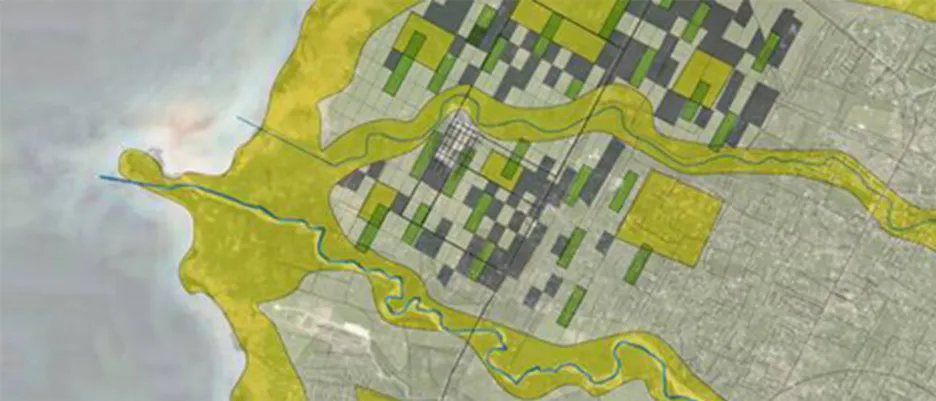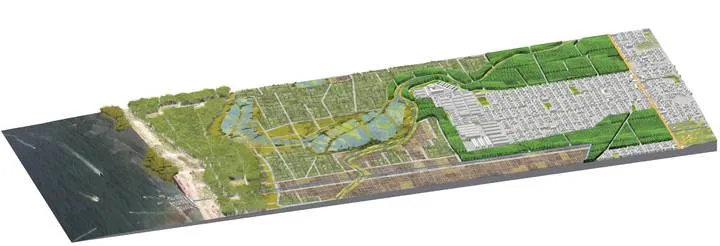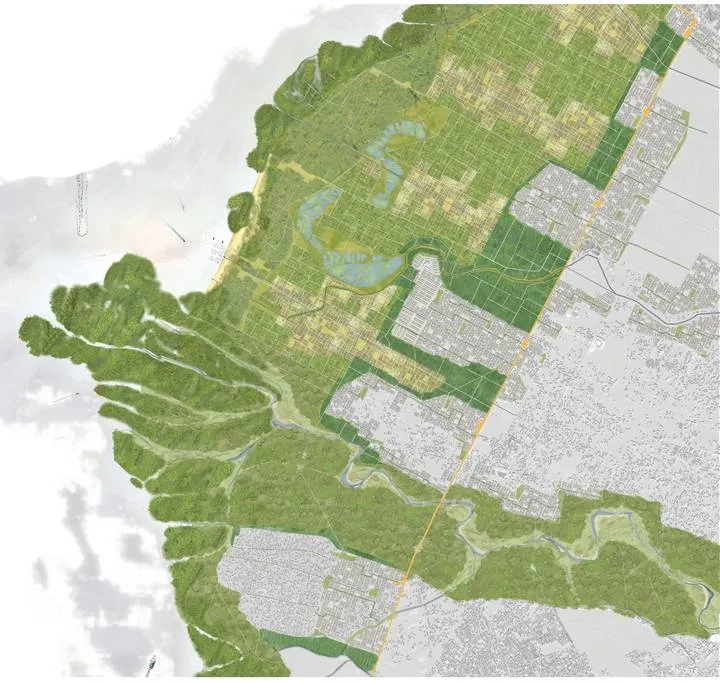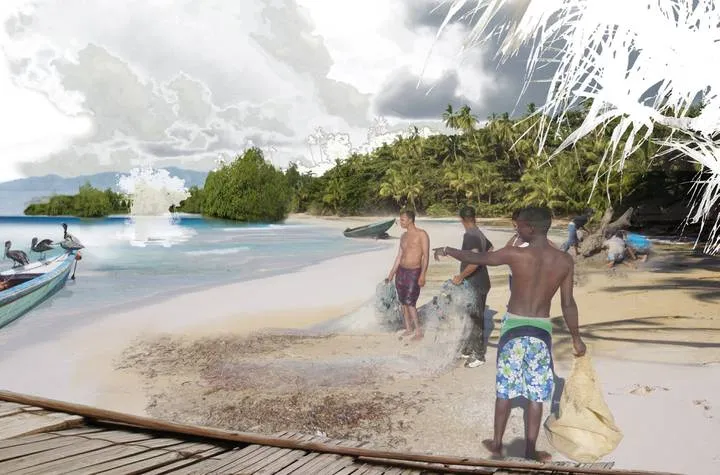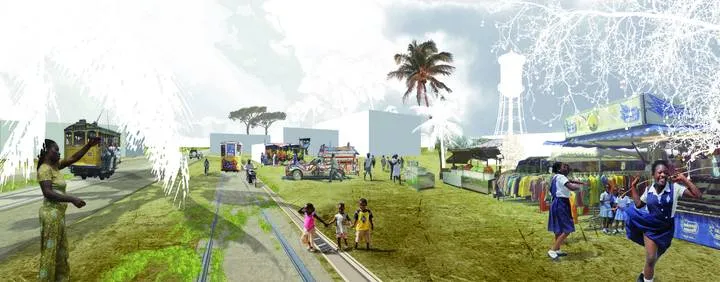Haiti - 1.5 After
Semester Project M.A. Landscape Architecture, Winter Semester 2011/12
Designing Water, Landscape and Resettlement Processes in Port-au-Princ
One and a half years after the earthquake, Port-au-Prince is still in dire conditions. 80 percent of the rubble has not been cleared yet. An estimated 680,000 residents live in tents or temporary quarters. Clean water is hard to come by, causing a recent spike in cholera cases. Despite a US$5.3 billion pledge in aid money from the international community and the presence of roughly 10,000 NGOs, overall progress in Haiti is excruciatingly slow. The continued precariousness of the living conditions forces recovery efforts to concentrate on short-term relief measures rather than on the long-term provision of sustenance and shelter. Since the event, no substantial permanent housing has been built in the city of 3.5 million residents. It is not due to a lack of motivation - many proposals exist – but rather due to a lack of legally available land and insufficient governmental direction.
While these efforts unfold and the hopes of the Haitian population are directed towards their newly elected president, Michael Martelly, new initiatives have sprung up between NGOs and government. The Exemplar Community Development Foundation is a Haitian based public-private partnership that seeks to develop replicable housing models for Haiti. Their efforts so far have concentrated mostly on a small 300 family community called Zoranje (translated as “oranges”) in the northwestern suburbs of Port-au-Prince. This is an area where development is possible because land can be made available through the Exemplar Community Development Foundation. In Zoranje the foundation has built valuable new infrastructure such as a school and playgrounds; they coordinate community activities such as soccer youth tournaments and family programs. As a parallel project with the help of private sponsors, the Exemplar Community Development Foundation is currently pursuing the construction of 125 permanent housing units for earthquake refugees on the site. Seeking guidelines to develop this exemplary community, the foundation solicited research proposals from various universities, awarding a team from the Harvard University Graduate School of Design and the MIT School of Architecture + Planning the contract to pursue the research.
Mission
The Harvard and MIT Research team identified five design principles for the Zoranje development: First, an urbanization process must be designed that is replicable within the current Haitian capacities. Second, the project must be connected to the larger formal and informal urbanization processes and material flows of Port-au-Prince. Third, the new urbanization must foster and sustainably harness the natural systems of the site (food, water and energy). Fourth, social design must be deeply integrated into the physical design, and fifth the creation of jobs equals the creation of shelter.
The research team identified four scales of operation for the Zoranje strategic framework: the scale of Port-au-Prince and its metropolitan region, the scale of 70 hectares around Zoranje, the scale of the town Zoranje and finally the scale of a neighborhood in Zoranje. Then a process was designed that defined an order of operations for action at each scale. The goal was to develop incrementally a community of roughly 5,000 to 8,000 inhabitants.
Water as Key
During the work it became clear that the management of water is the most critical infrastructure to be designed for the new settlement. Centralized water provision by Haitian authorities is highly unlikely.
Potable Water Provision: local water sources have to be identified and the suitability of groundwater, river water, sea water or rain water for water consumption has to be investigated.
Stormwater Management: the settlement is located between two rivers in a floodplain. Hurricanes are a frequent reality in Port-au-Prince. Integrative drainage and water harvest schemes must be developed.
Water Treatment: consumed water has to be cleaned and reused on-site (irrigation of agriculture, greywater use, aquifer recharge). Relevant water cycles have to be developed including necessary infrastructures.
These water management concepts have a decisive influence on the layout of the future community and have to be developed with a high sensitivity to local practices and culture. The landscape students enrolled in this studio are expected to develop water sensitive landscape concepts for an incrementally growing settlement. Connections can be made to energy and food production. Successful concepts have to be robust, flexible and income generating. Three environmental engineering students led by Prof. Harald Horn will develop certain aspects of water management from an engineering and scientific perspective. The Master of Landscape Architecture students are expected to collaborate with the environmental engineering students.
Supervision
Prof. Christian Werthmann (Hans Fischer Senior Fellow TUM, Associate Professor Harvard Graduate School of Design), Dipl.-Ing. Thomas Hauck (TUM, LAO), Dipl.-Ing. Juliane Schneegans (TUM, LAO)
Partner
TUM, Lehrstuhl für Siedlungswasserwirtschaft, Prof. Harald Horn, Harvard University Graduate School of Design Social Agency Lab, Prof. Christian Werthmann Massachusetts Institute of Technology Department of Architecture & Planning, Prof. Phil Thompson
